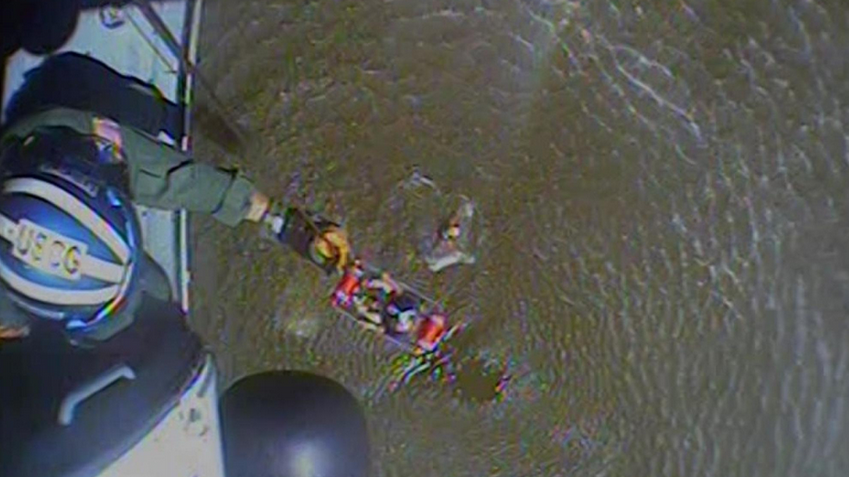Earth Observation – How EO Data Assists With Search and Rescue and Fallout From Disasters and Catastrophes
3rd Mar 2023
There are currently around 1,000 different Earth observation satellites in orbit, and this number is set to grow significantly in future years. One of the many reasons that so many satellites are currently planned is the fact that the data provided is finally starting to be embraced and applied to its full potential. In this guide, we’re exploring how EO data makes a huge difference when it comes to disasters and catastrophes as well as Search and Rescue efforts around the world.
Of course, EO data can be used to save lives. This more than justifies the resources that are spent planning for catastrophes, and tracking ships as well as other Search and Rescue efforts.
Every year, it is estimated that natural disasters impact hundreds of thousands of lives, and that the economic losses run into the hundreds of billions of pounds. This burden is often placed onto developing countries or Least Developed Countries (LDCs) which are already struggling with resources.
We have recently seen data from the International Charter Space and Major Disasters used in the disasters in Turkey and Syria. The Charter, which was founded over 20 years ago, provides open access to data provided by many Earth Observation Satellites, and in this particular instance the data was able to guide rescue missions and map the devastation in the wake of the Earthquakes. The Charter works 24/7 and is a collaborative effort between space agencies around the world.
In this instance, the Sentinel-1 and Sentinel-2 satellites were able to capture and analyse the fallout and “allow geohazard risk assessment experts to retrieve precise information concerning terrain motion”.
How EO Satellites Assist Search And Rescue
It is no great surprise that satellites can provide us with a tool for Search and Rescue applications. If a plane or craft should find itself out of the tracking systems on land, it is possible that satellite data can lead the efforts to track it down.
According to ESA: “Between September 1982 and December 2020, at least 51 512 people were rescued on land and at sea with help from a network of Earth-orbiting satellites able to detect and locate emergency distress beacons.”
So how does this actually work?
The international Cospas-Sarsat cooperative has been operating since 1979 and still saves lives today. There is a network of instruments that have been placed on around 50 satellites in space. If an emergency beacon is sent from an aircraft, ship, or even on land, the coded information is detected and sent to Rescue Coordination Centres.
The beacons that are sent still largely rely on radio transmitters. They can be triggered in the case of an altitude drop or contact with water to automate the process, too, removing the need for human impact.
Cospas-Sarsat then detects these radio transmissions, which also carry information about the particular ship or plane in distress. The signal is relayed to terminals on Earth. A lot of satellites in orbit have repeaters that can also shift the transmissions to a different frequency, helping to avoid interference. Data can be decoded and verified before being sent to Rescue Centres to start the process of searching.
On the Cospas-Sarsat website you can even read some of the good news rescue stories for incredible examples of how these satellites have saved lives.
For instance, in February 2023, Off the coast of New South Wales, a boat overturned and the four members of the crew had not put on their lifejackets. The skipper managed to set off a signal and a helicopter was there in under an hour. There were no injuries.
How EO Satellites Assist After Disasters and Catastrophes
While the Cospas-Sarsat system is really the main way that EO data is used for rescue missions at sea, there are examples of many organisations working to process EO satellite data in the wake of disasters.
We’ve already covered the International Charter Space and Major Disasters, but this is not the only organisation working to help.
For example, the British Geological Survey processes data, including that provided by the International Charter Space and Major Disasters, and quickly, remotely creates maps and images that can inform rescue missions. They may also combine this with fieldwork and other scientific data and quickly provide advice to stakeholders such as governments and charities.
Many British satellite operations are also contributing to the considerable mass of data being broadcast back to Earth all the time. As well as ESA operations assisted by the UK, there are also private companies and research institutions tasked with launching and maintaining these satellites. The UK is a key player in satellite manufacture, and continues to provide some of the most high-tech and detailed imaging and sensing devices.
The NASA Earth Science Disasters Program is also worthy of mention, as America’s space agency started this program in 2006 to use its space technology for further understanding of the Earth.
The NASA Earth Science Disasters Program has tracked and analysed a number of disasters and catastrophes, including the 2010 Deepwater Horizon oil spill around the Gulf of Mexico. The data was able to alert those nearby and help them to stay away from potential harm.
NASA also uses the LANCE system, analysing satellite data to predict and monitor dust storms. This can help to avoid potential issues by diverting aircraft paths.
The satellites have also helped throughout examples of volcanic eruptions. Satellites can measure how far the ash plumes are threatening people, and through a deeper understanding of ash, they can even help to predict future eruptions. A future post in our series on Earth Observation will cover the prediction power of Earth Observation technology and how disasters may even be totally prevented using satellites.
Examples of just some of the ways the data can be used after a natural disaster or human catastrophe include:
- Mapping damage. For instance, if there is an earthquake or volcano, satellite data can show things like which areas may be passable and how rescuers may still be able to access the area with minimum risk.
- Continuous monitoring. Some disasters have an ever-changing landscape. For instance, spillages and wildfires need to be monitored on an ongoing basis. This image of a Chilean wildfire, taken by a Copernicus satellite, is one example of how this is possible.
- Debris and damage management. Satellite imagery can provide relatively accurate estimations of the sort of damage that has occurred, something we saw put to good use in the fallout of the recent Turkey and Syria earthquakes. The analysis of this data can determine what teams are deployed and what equipment they need.
- Prediction and prevention. This will be covered in full in a future post, but by continually monitoring risks such as those posed by volcanoes and extreme weather conditions, it is possible that EO data can tell us when disaster might strike.
EO data is becoming more detailed, and with AI and machine learning the ways it is being processed are also continuing to evolve and improve, arming us with the best possible chance of saving lives by using ongoing data collection from orbiting satellites.
![Best Astrophotos Of The Week: Moon Halo, Delta Heavy Rocket’s Last Launch, And More [12-19 April] Best Astrophotos Of The Week: Moon Halo, Delta Heavy Rocket’s Last Launch, And More [12-19 April]](https://orbitaltoday.com/wp-content/uploads/2024/04/Milky-Way-over-Damavand-peak-1-300x239.jpg)





Thank you for your comment! It will be visible on the site after moderation.